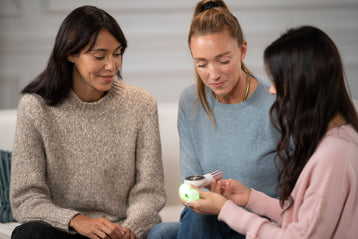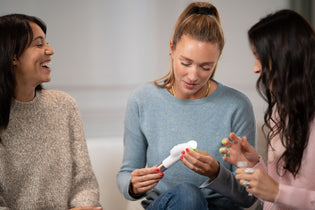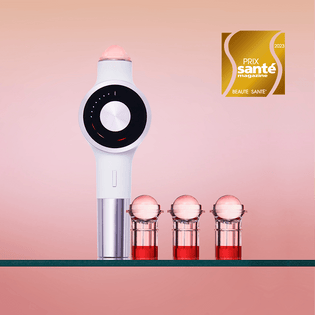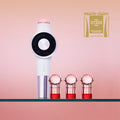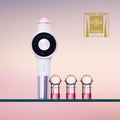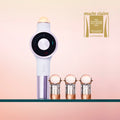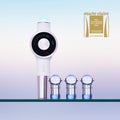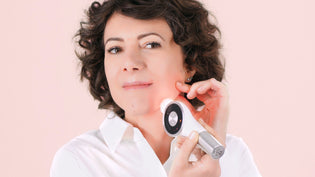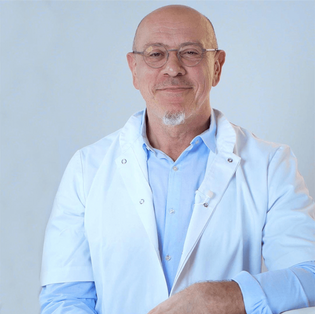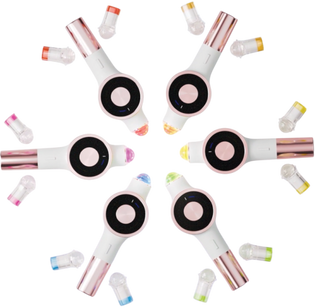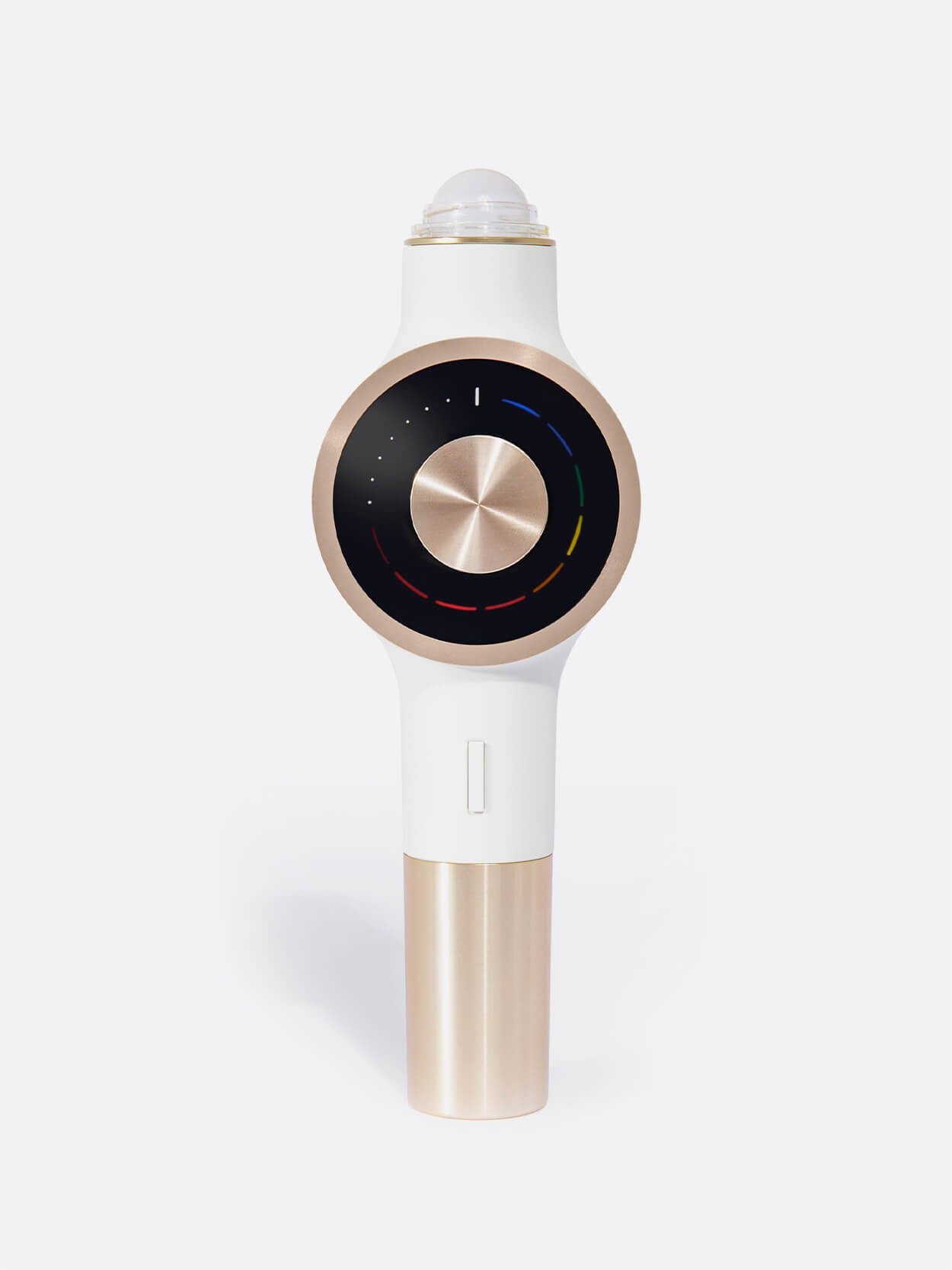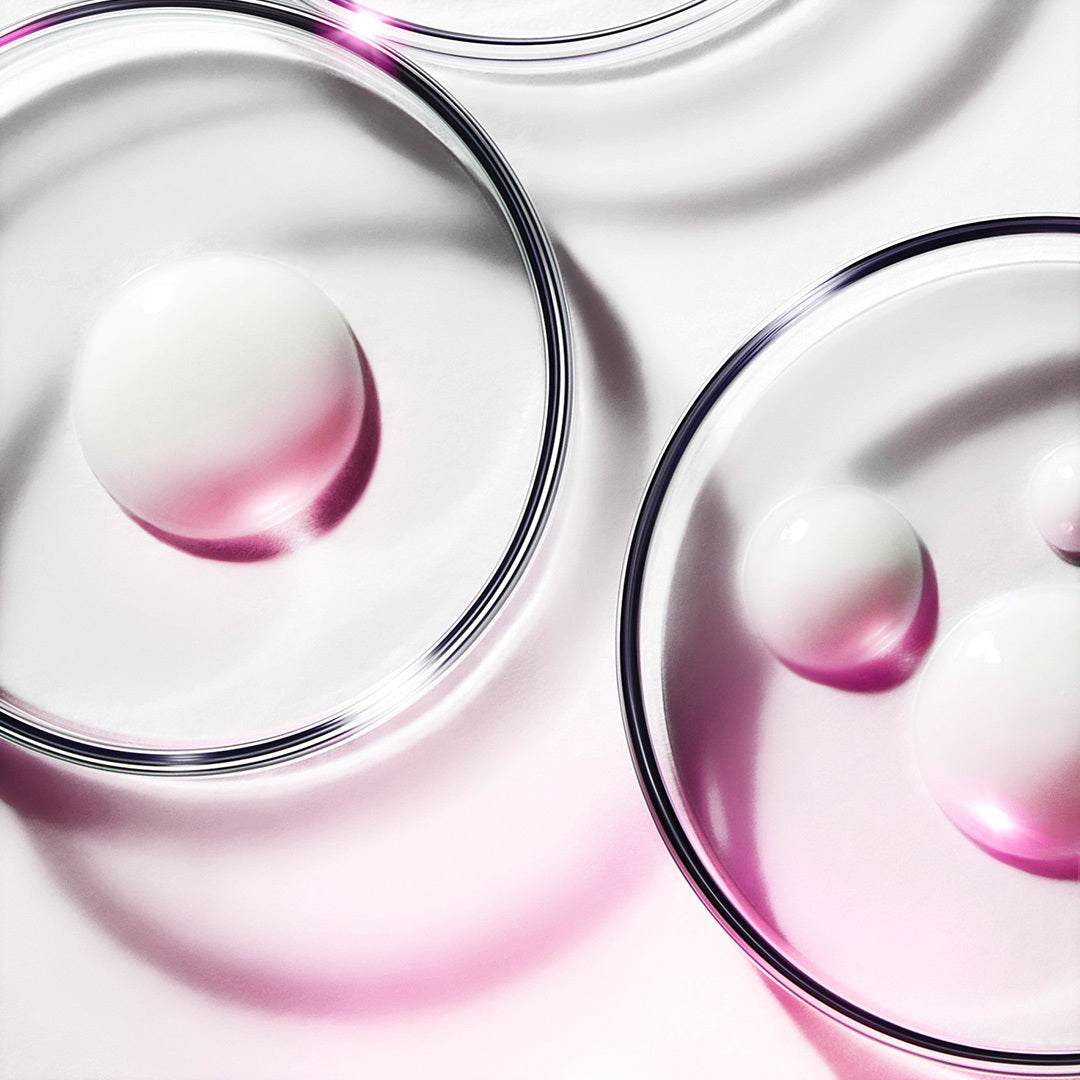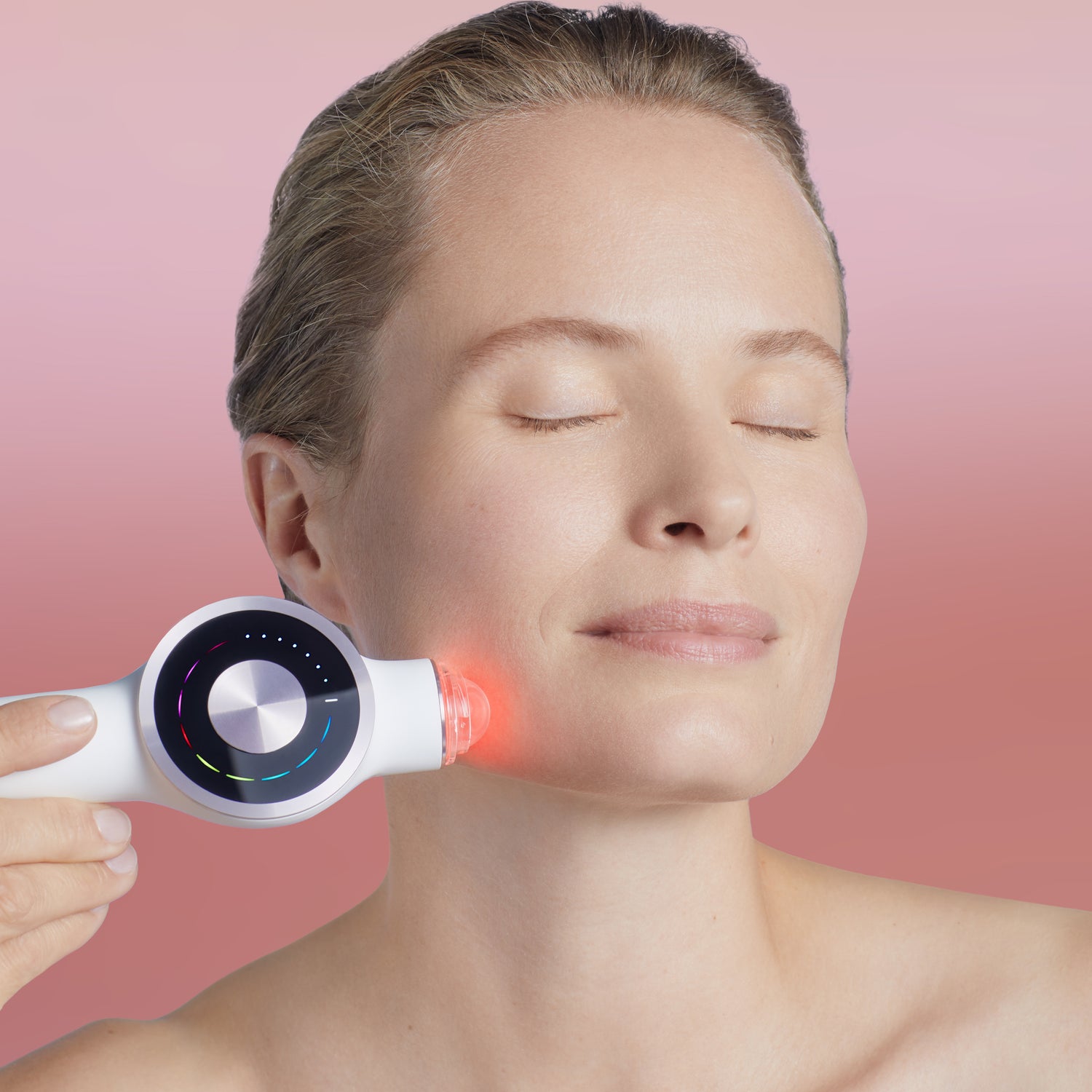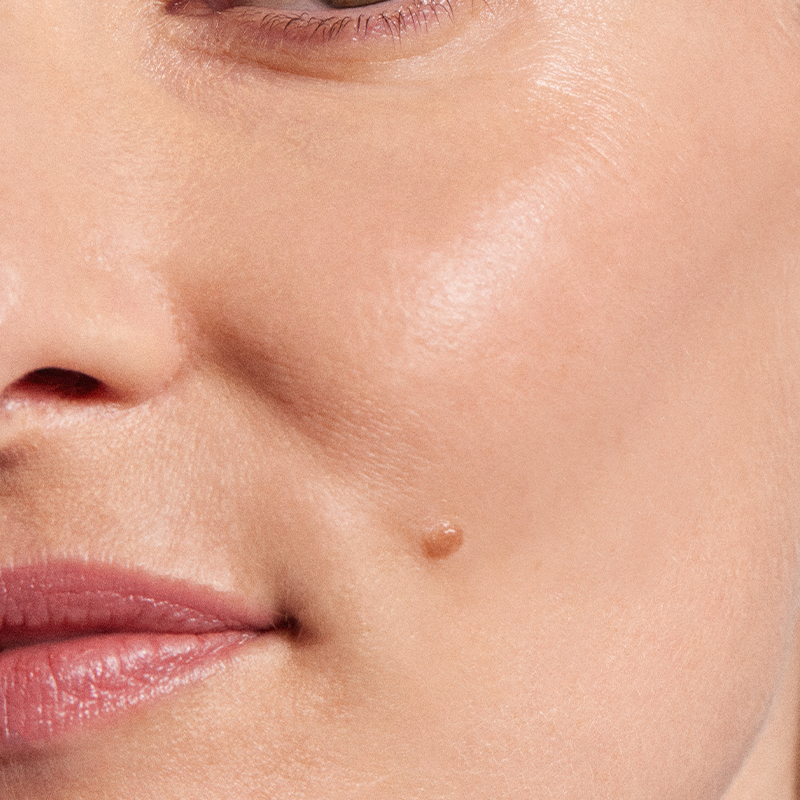THE TECHNOLOGY BEHIND LIGHTINDERM
The skin, a living organ capable of regeneration
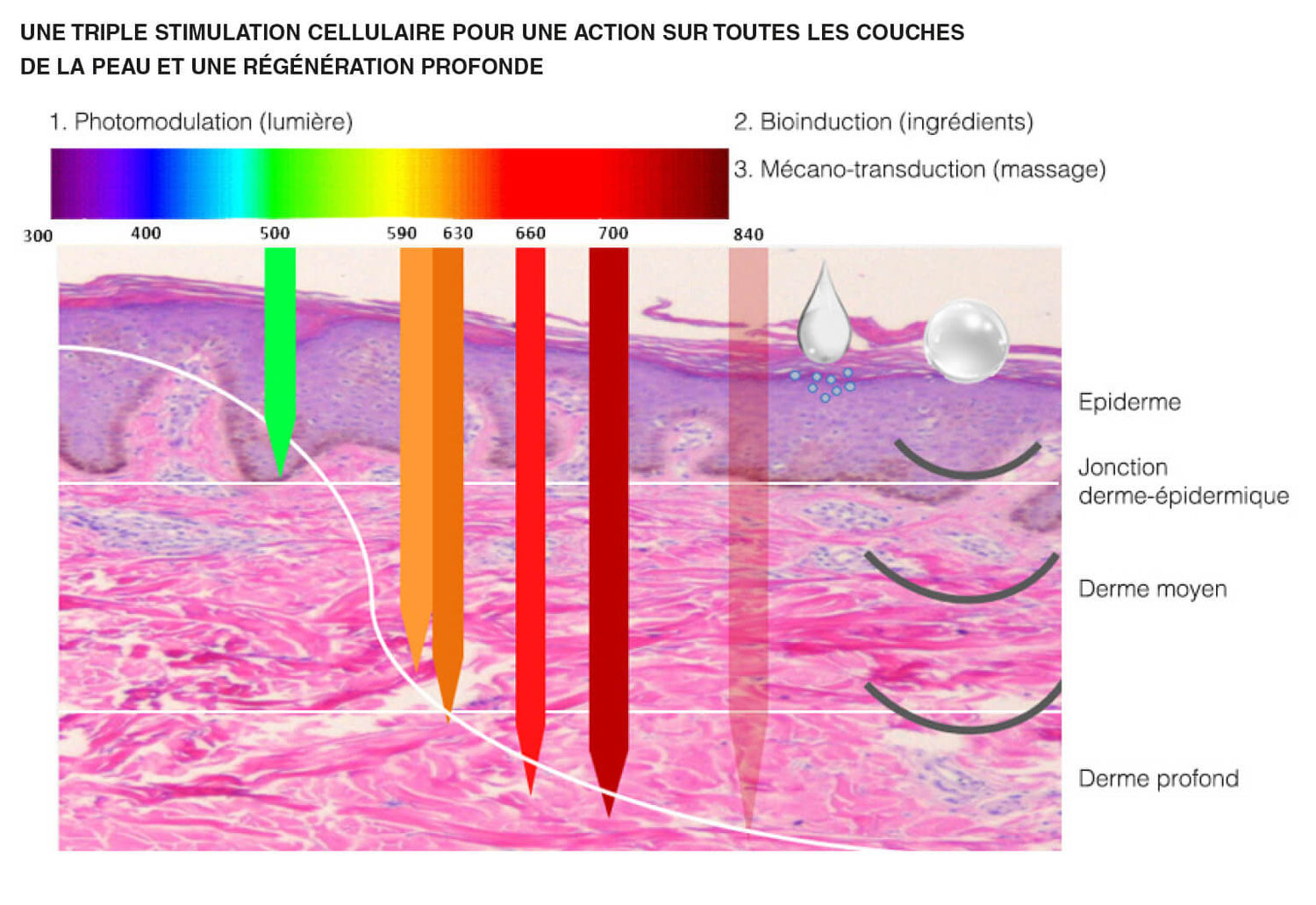

The skin is, with the liver, the only organ in the human body capable of regeneration.
However, with age and external aggression, this self-repair capacity diminishes, the skin loses its firmness and radiance and the first wrinkles appear. The sole action on the surface of classic cosmetics is no longer sufficient to fight against the signs of aging.
To effectively restart these self-regeneration mechanisms, all layers of the skin must be mobilized, including the deepest ones, to have a global action.
The Lightinderm solution: the unique combination of 3 technologies
For the first time, Lightinderm synergistically combines 3 technologies for triple stimulation of the skin.
An effective and patented selection of regenerating lights
Light, regenerative energy used in dermatological practices
It has been widely demonstrated that the skin responds to light stimulation , thanks to photo-receptors present in the cells. A very short exposure to low intensity light triggers a series of reactions which will have lasting consequences on the biology of the cell: energy supply, protein synthesis, cell regeneration. This is called photobiomodulation.
Light is particularly used in dermatological practices to promote healing and post-procedure recovery, but also to improve the quality of the skin, fight against the signs of aging and treat acne.
Lightinderm, scientifically validated light combinations
The Lightinderm research program began at Cochin hospital with more than 375 in vitro tests.
Its objective: to determine the wavelengths having the best effects on cells.
11 wavelengths were preselected, followed by a series of tests:
- Association of different wavelengths
- Comparison of the effect of intensities
- Comparison of illumination times
- Development of the most efficient pulse patterns.
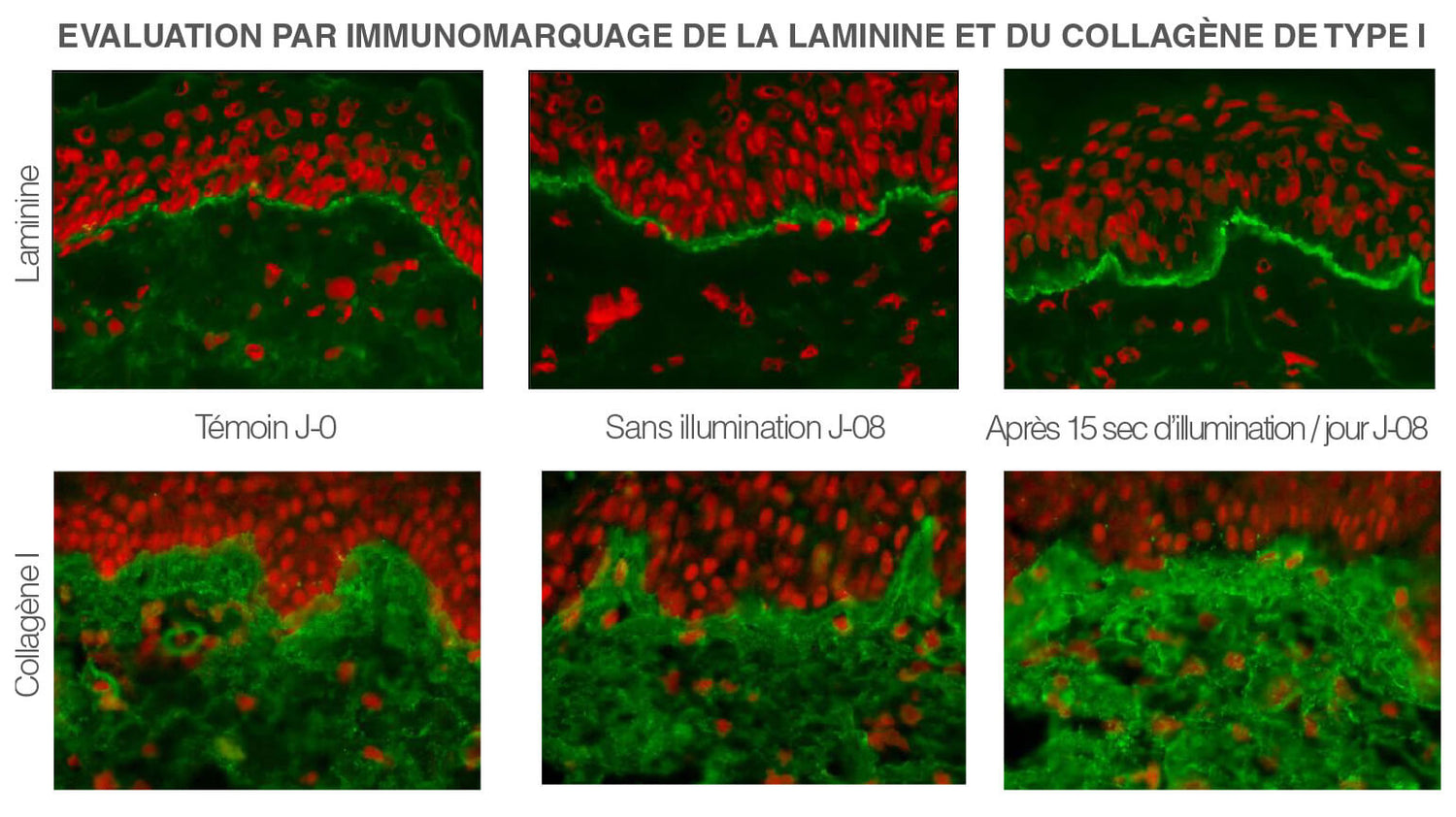
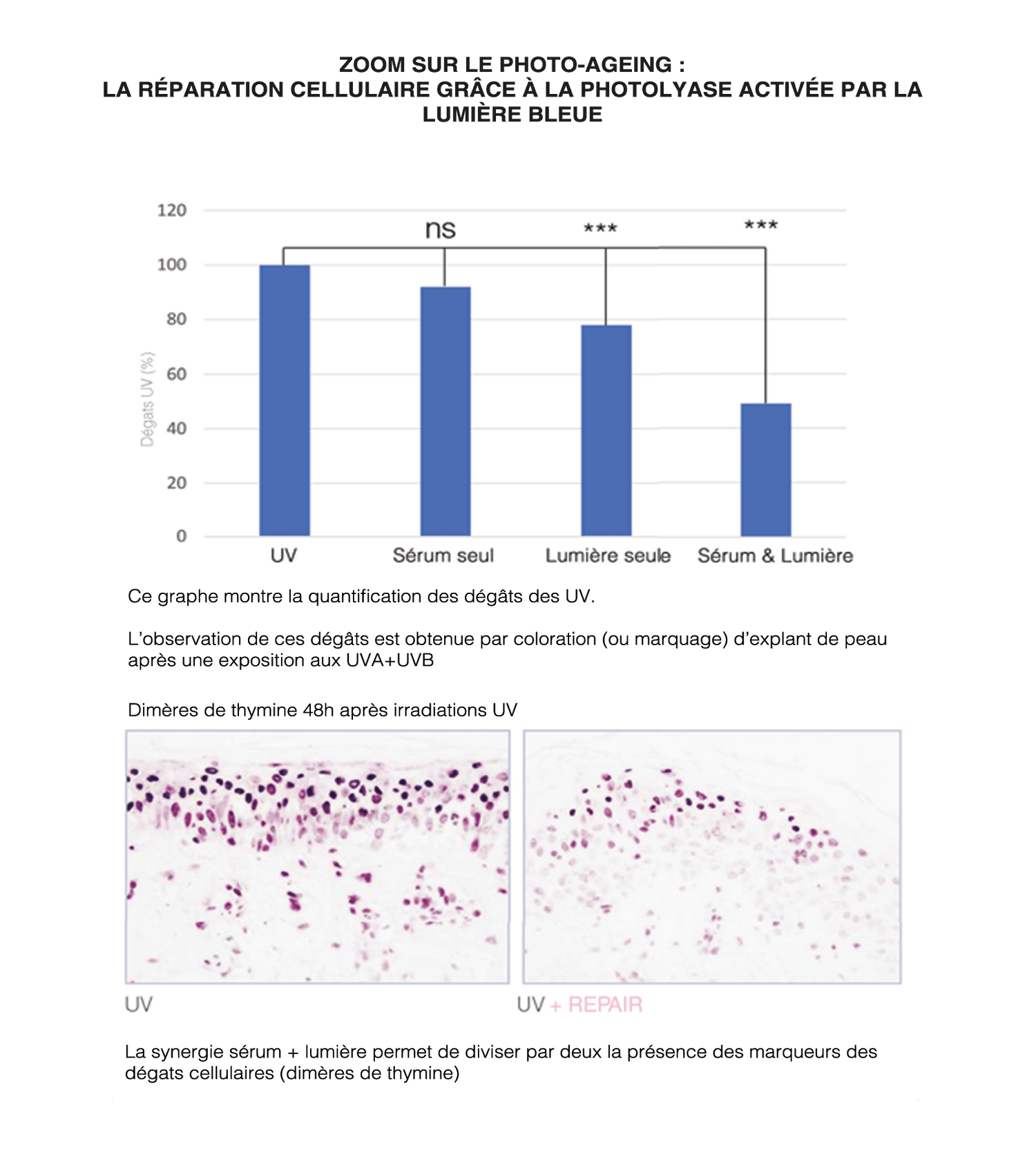
Combinations of light + photo-active ingredients for increased effectiveness
Example: the synergy of blue light + Photolyase to fight against photoaging
This synergy was the subject of a Nobel Prize in 2015 and was widely studied by Lightinderm to define the optimal parameters and dosages to ensure the greatest effectiveness.
Exposure to UV rays causes damage to the core of skin cells, which subsequently leads to deterioration of the dermis and therefore skin aging.
Lightinderm research capitalizes on the cellular repair capabilities of a photo-active plankton extract: photolyase.
This enzyme, once activated by blue light, repairs cellular damage caused by UV. Day after day, the cells self-repair and return to optimal functioning, the signs of aging fade.
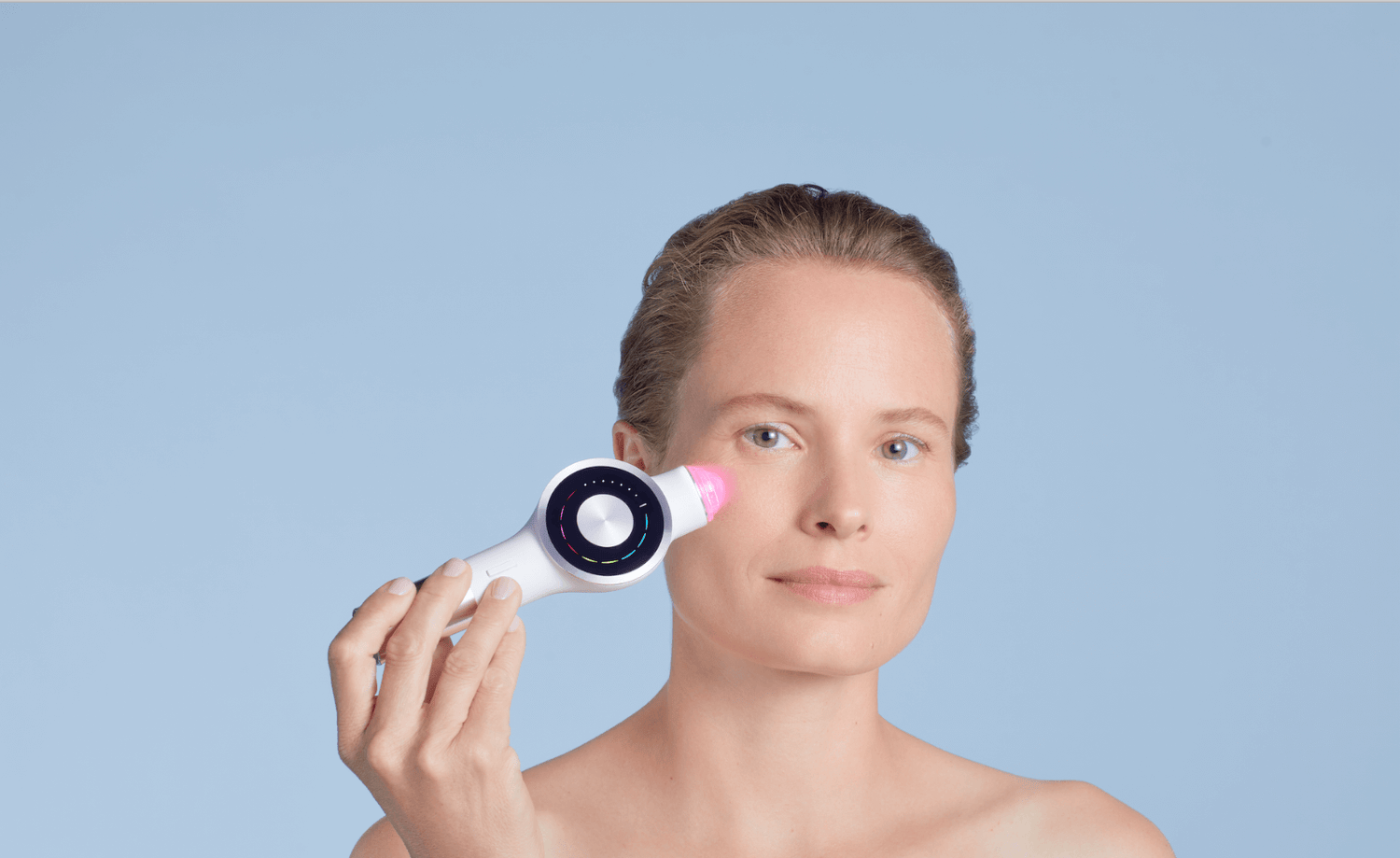
The complementary effect of deep tissue massage
Effective mechanical stimulation
All cells of the dermis and epidermis are sensitive to massage . Mechanical stimulation is at the origin of a detectable and measurable signal, which triggers a now well-known cellular activation, mechanotransduction.
The action of massage is particularly interesting in the context of Lightinderm because it perfectly complements that of lights combined with photo-active serums.
Density, firmness and radiance of the complexion
Through its action of mechanical pressure, the massage energizes the extracellular matrix ensuring the remodeling of the dermis. Tension promotes the production and organization of collagen isotypes allowing a strong intercellular mesh. The skin is denser and firmer.
Massage also improves microcirculation, promoting the supply of nutrients and oxygen for a more radiant complexion .
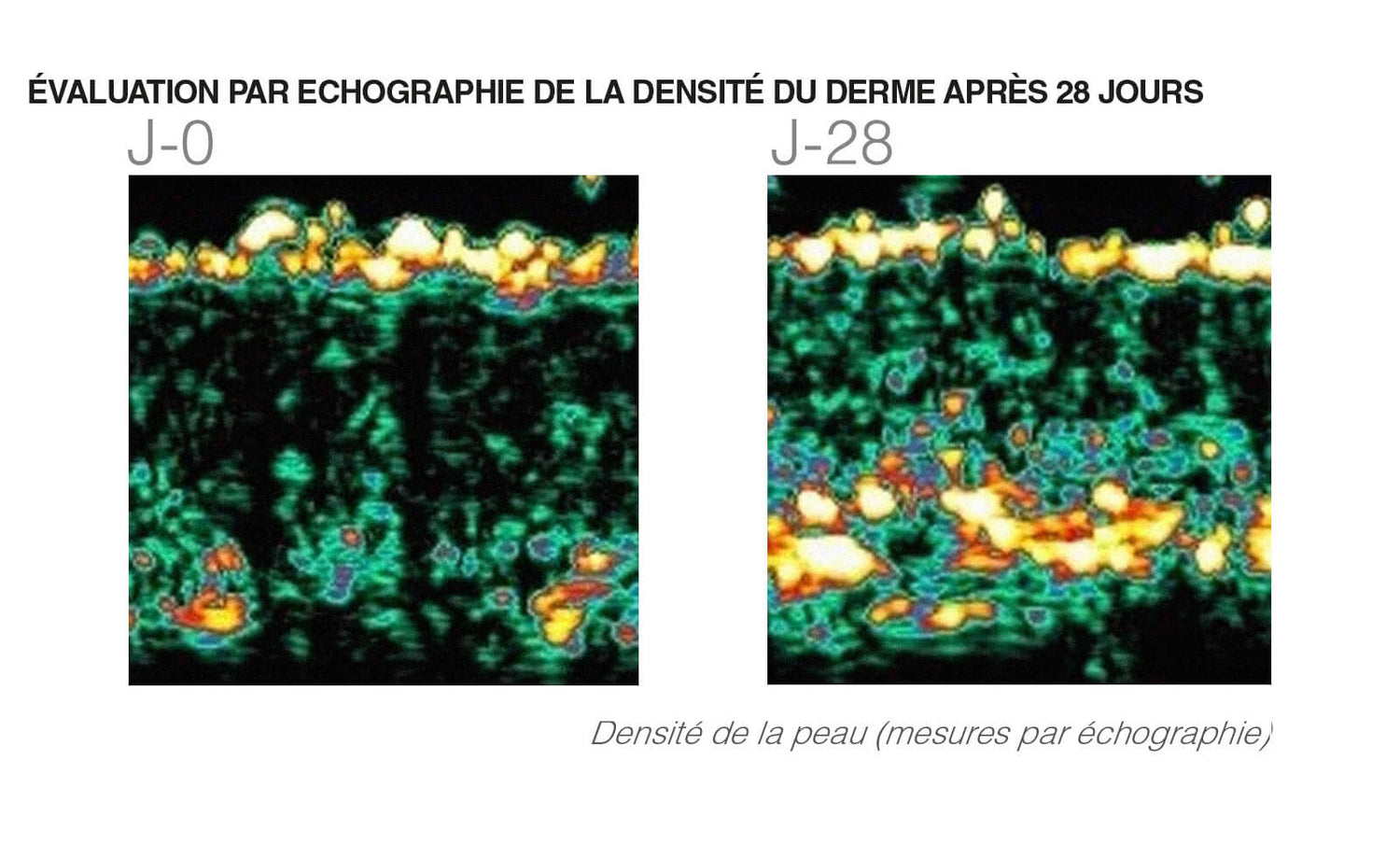
A Medical Investigation and Validation Protocol
Lightinderm has been investing for more than 7 years to advance fundamental knowledge on the interactions between light and the skin and on the effect of optimal combinations between active ingredients and light. The development protocol for each new Lightinderm program follows three stages in-vitro, ex-vivo, and in-vivo (clinical studies) .
More than 450 in-vitro studies
Lightinderm carries out laboratory research on human cell cultures in order to discover the optimal light parameters, combine wavelengths effectively and above all associate them with active ingredients in order to potentiate their effects.
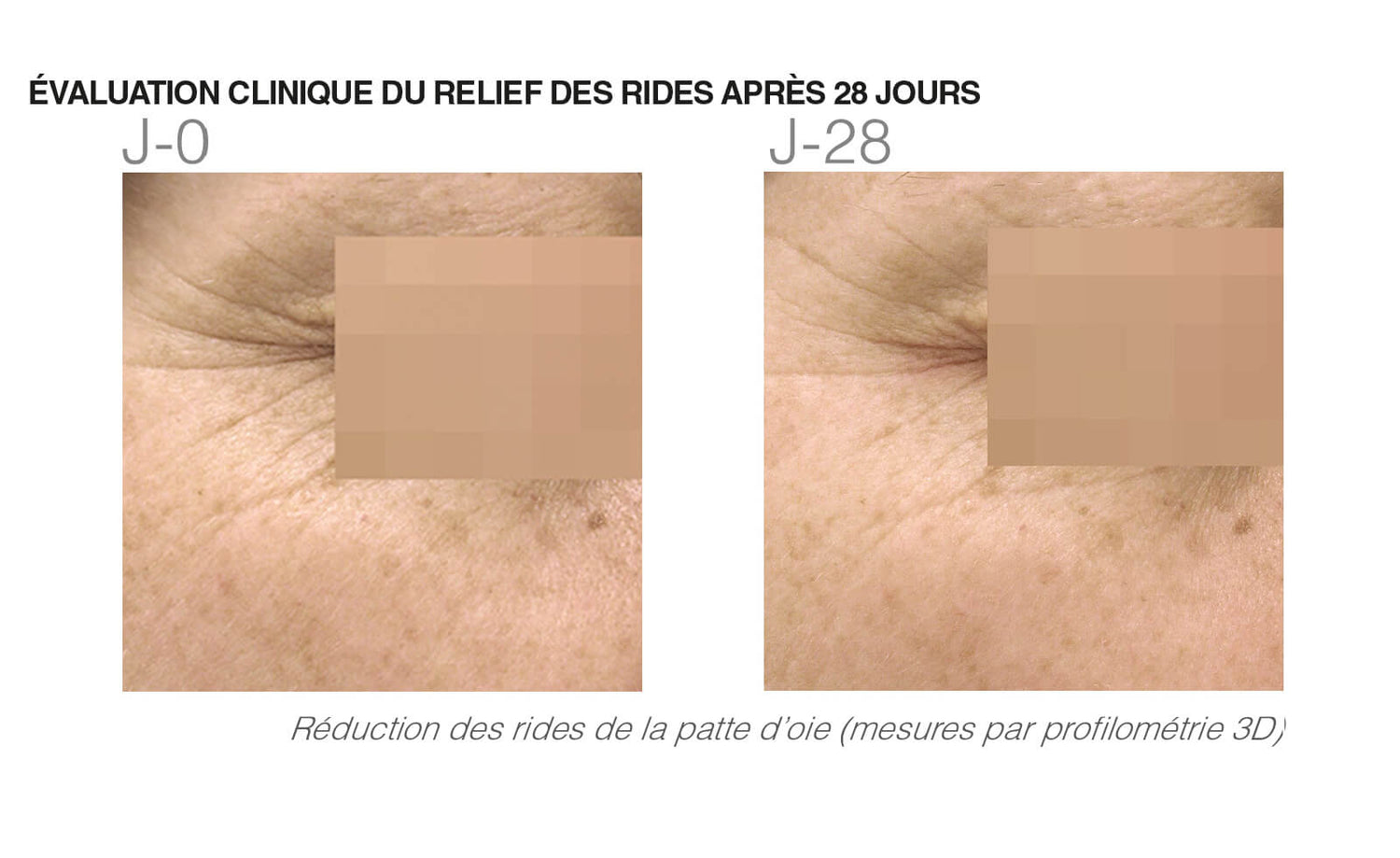

More than 25 pre-clinical ex-vivo studies
The in-vitro results are then evaluated on models of skin explants maintained in survival or reconstructed skin in order to validate the effects of the treatment on the different layers of the skin and to study the mechanisms of action.
5 clinical studies on more than 150 women: demonstrated effectiveness and safety
The effectiveness and safety of all Lightinderm treatments are clinically proven, thanks to studies carried out by independent laboratories under dermatological control.
Four levels of evaluation are carried out : instrumental measurements, clinical evaluation by a dermatologist, scoring by a panel of experts and self-assessment by volunteers.
